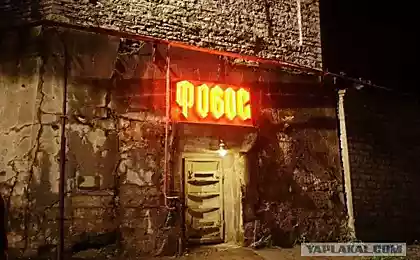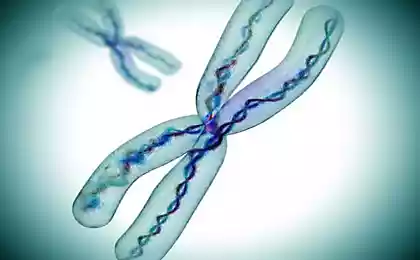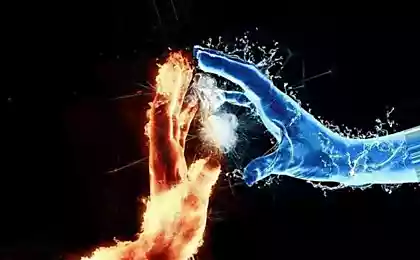671
How genes affect the choice of life partner

Analysis of a large sample of mono- and fraternal twins living in the UK allowed us to assess the degree of heritability (genetic conditioning) of differences by conscious preferences when choosing a marriage partner. The attitude of people to 13 criteria of choice (kindness, intelligence, health, attractiveness, education, religiosity, etc.) was studied.
It turned out that about 20% of individual differences in assessing the importance of these criteria are determined by genes, not the environment.
Another study on Australian twins showed that the heritability of realized marriage preferences by such criteria is negligible.
It turns out that genes influence our desires more than their fulfillment – probably because desires alone are not enough to acquire the perfect marriage partner. The findings are preliminary and should not be extended to all criteria for choosing a life partner.
Sexual selection leads not only to the development of adaptations that ensure sexual attractiveness and success in competition for sexual partners. Equally important is the evolution of marriage preferences, the criteria by which individuals choose their partners. For these preferences to evolve, they must be subject to hereditary variability.
Ironically, we still know very little about such variability in natural animal populations. In most studies, it is assumed by default that the preferences of all individuals of the “selecting” sex (usually females) are approximately the same, and the task is to identify and describe them.
Meanwhile, it is known that marriage preferences are variable: they can vary not only from individual to individual, but also in the same individual depending on age, phase of the reproductive cycle, physical and mental state.
The question of how much variation in marital preferences depends on genes, and how much depends on environment and life experience, is almost unknown. Without this, any estimates of the influence of sexual selection on the evolution of the studied population will be inaccurate at best.
To fill this gap, one of the most convenient objects is man, not least because people can simply be asked about their preferences, instead of conducting cumbersome and expensive behavioral experiments or long-term observations of animals in nature (the results of which, incidentally, are not always more reliable than survey data). The reliability of the findings in such studies strongly depends on the size of the sample, and interviewing 4,000 people is immeasurably easier than following, for example, the mating behavior of 4,000 peacocks.
To clarify the question of the heritability of marriage preferences in humans, biologists and psychologists from the UK and Australia used the classical twin method. The so-called “broad-sense heritability” was evaluated, that is, the proportion of variability in the studied trait, explained by genetic differences between individuals, rather than environment and random factors.
The twin method is based on a comparison of the trait in pairs of identical (monozygous) and non-identical (dizygotic) twins. In identical twins, all genes are the same, in non-identical ones, only half of the genome is exactly the same, and in the second half there may be differences. Therefore, if there is a hereditary component in the variability along this trait, identical twins should be on average more similar to each other on this trait than non-identical twins.
There are very complex, detailed and repeatedly tested statistical methods that allow comparing correlations in identical and non-identical twin pairs to decompose the observed variability into three parts, evaluating each quantitatively:
1) variability, depending on genes (this, in fact, is the sought value of heritability of the trait),
2) variability, depending on environmental factors common to twins of the same pair (this includes the conditions of intrauterine development, the situation in the family, and the influence of parents),
3) variability, depending on environmental conditions different for twins from the same pair, as well as on all sorts of random factors, including errors made by researchers in measuring the trait .
The authors studied a large sample of twins living in the UK. The study involved 4,586 twins, including 1,763 full pairs and 1,060 singles whose sisters or siblings were not included in the sample. Singles in such studies are useful in improving the accuracy of some statistics. Identical and non-identical twins were approximately equal in the sample. The majority (88%) of the participants were women (these twins were originally selected to study certain female hereditary diseases). The data for men and women were processed separately because there was no reason to assume that the heritability of marriage preferences should be the same in both sexes. There were only 16 different-sex couples, and twins from these pairs were treated as "loners."
All participants were asked to rank 13 potential partner traits in order of their importance. The task stressed that it is about the criteria for choosing a spouse or partner for a long-term relationship, not a fleeting relationship. The characteristics were as follows:
kindness and understanding, compliantness, easy character, intelligence, health, external attractiveness, personality brightness, desire to have children, ability to earn well, creativity, artistry, economics, good heredity, university education, religiosity.
One of the disadvantages of the method is that it was not always possible to understand the direction of preferences. For example, in the case of health, this orientation is obvious: a healthy life partner, of course, is preferable to a sick one for most respondents. However, in the case of religion and the desire to have children, the situation is not so obvious.
The order in which the participants placed these traits generally corresponds to the results of many studies performed in different countries. Both sexes were considered the most important criterion of “kindness and understanding”. For both sexes, ease of character, intelligence, health and appearance were important, while good heredity, university education and religiosity did not receive high marks.
Statistical analysis revealed significant differences between male and female assessments of some criteria. For women, more important than for men, such qualities of a partner as kindness, desire to have children and ability to earn well. Men attach more importance to external attractiveness, economics, creative inclinations and personality brightness.
The assessment of many signs changes with age. The older the respondent, the higher on average he appreciates in the partner kindness, religiosity (or lack thereof), economics, good heredity, ability to earn, intelligence and health. The importance of light character and bright personality decreases with age. The assessment of some signs varies with age in men and women. For example, attractiveness becomes less important for women, but not for men. Good heredity and ability to earn with age become more important in the eyes of women and lose value in the eyes of men. The importance of the desire to have children and household chores increases with age in men, but remains constant in women.
Weak correlations were found between the scores of some traits: those who value attractiveness highly, on average, attach slightly less importance to kindness, and the importance of the mind positively correlates with the importance of university education. But all the correlations found are very weak, so the authors considered the 13 traits to be independent.
For all 13 indicators in women and 12 in men, the similarity of identical twins was higher than non-identical (the only exception is the assessment of the importance of the criterion of “kindness” by men). This indicates the presence of a hereditary (genetic) component in the variability of marriage preferences.
The statistical analysis carried out according to all the rules revealed a reliably non-zero heritability of female preferences concerning kindness, health, physical attractiveness, personality brightness and ability to earn. Maximum heritability (0.30) is indicated for women's attitudes toward a partner's physical attractiveness. Attitude to other criteria, most likely, also depends on the genes, but to the level of statistical significance these results “did not reach”. Of the 13 criteria, genes are the least likely to affect women’s attitudes toward a partner’s economics (heritability of 0.05). But the family has a small but reliable influence on the attitude to economics, as well as the mind of the partner (for other preferences, the influence of the family was unreliable).
In men, many preferences seem to be partly hereditary, but due to the small number of men in the sample, statistical significance was achieved only in two cases (economicity and religiosity). There is no reliable influence of the family on marriage preferences among men.
If you combine all 13 characteristics into one complex, it turns out that the heritability of marriage preferences in women is 0.20 (with a high level of reliability), in men - 0.19 (on the verge of reliability). Differences in reliability in this case are clearly determined not by different heritability, but by the fact that men in the sample were 8 times less than women.
This study is largely innovative. The authors invaded an area hitherto almost unexplored. Many more such works will be needed for definitive conclusions and reliable interpretations. However, for the first time, the authors obtained convincing data on the existence of hereditary variability in people according to several criteria for choosing a marriage partner. In addition, they showed that the relative importance of different criteria can also be subject to hereditary variability: someone values intelligence more than beauty in partners, someone – on the contrary, and these differences are also partly determined by genes.
This is the first time this has been achieved not only for humans but for all animals. When choosing a partner, animals usually take into account not one, but many different criteria.
However, models that take into account several selection criteria at once are only beginning to be developed by specialists in sexual selection. For such models, the result obtained is of great importance.
In 2011, a large sample of Australian twins and their spouses studied the heritability of realized marriage preferences (Zietsch et al., 2011). In other words, it was not the abstract desires of the twins, as in the work under discussion, that were compared, but their real spouses.
The comparison was carried out on many grounds: height, weight, education, income, character traits, religiosity, attitude to various social problems. In most cases, heritability is close to zero. That is, the husbands of identical twin sisters were no more similar to each other in all these features than the husbands of non-identical sisters.
It turns out that the hereditary component present in marriage preferences and revealed in the work under discussion is practically not manifested when it comes to the conclusion of real marriages. This is understandable: in order to get a “perfect” husband, one desire is not enough.
In any species prone to monogamy, the creation of couples is influenced both by the preferences of both participants and how much each of them matches the preferences of the other. It is not enough to dream of an intelligent and kind husband, you also need to possess the qualities that are valued by intelligent and kind men.
Of course, real marriages are influenced by many other factors besides the personal qualities and preferences of partners. It should also be noted that preferences may change depending on the circumstances.
One of the clearest patterns found in the 2011 study (as well as in a number of earlier studies) is the positive assortativity of marriage, i.e. the tendency of people to marry partners similar to them in a number of ways (such as age, religiosity, education, height, weight, attitudes to birth control, immigrants from Asia, etc.). Many of these traits depend in part on genes. For example, the heritability of body weight in the Australian sample is 0.68, the level of education is 0.43, religiosity and attitude to various social problems is about 0.30. It has been shown that the increased similarity of spouses in these characteristics is more due to the initial choice than the “re-education” in the process of living together.
It can be noted that there is a contradiction between the positive assortativity of marriages on hereditary grounds and the lack of heritability of realized marriage preferences. It would seem that from the first it follows that in the selection of spouses should also be a hereditary component. Let us hope that further research will clarify this tangled question, the study of which is still just beginning.
In order to assess the strength and nature of sexual selection in modern human populations, it is also necessary to find out whether individual differences in marriage preferences affect reproductive success. One might think that zero heritability of realized preferences excludes the possibility of such an influence, but this is not the case. Even if the actual choice of spouse does not depend on genetically determined preferences, the number and quality of children can still depend on them. For example, it is known that females of some animals invest less of their resources in their offspring or distribute them unevenly between sons and daughters if the children are conceived from a low-quality or inappropriate male.
In order to avoid erroneous interpretations, it is necessary to understand well what the magnitude of heritability of a trait shows. It shows whether the variability in a population on a given trait depends on genes, rather than “the trait at all.”
A trait as such (for example, the tendency of people to value kindness in a partner) can be quite rigidly “written” in the genome, but the genes that affect this trait may be the same in all modern people. In this case, the trait will have zero heritability. Such a trait cannot evolve in the here and now, but that doesn’t mean it hasn’t evolved in the past. Quite the opposite: low hereditary variability must be characteristic of traits that strongly affect fitness, because selection, favoring some traits and weeding out others, systematically reduces hereditary variability. The variability that remains in the population will depend mainly on the environment, not genes.
Therefore, our most important traits, which were subjected to intensive selection from our ancestors, may well have zero heritability in modern humanity.
This means that the results of the research in question help to understand how sexual selection works in modern human populations, but they can only be used with great care to reconstruct past evolutionary events. published
P.S. And remember, just by changing your consciousness – together we change the world!
Join us on Facebook, VKontakte, Odnoklassniki
Source: life-up.ru/biblioteka/articles/pri-vyibore-sputnika-zhizni-ot-genov-zavisit-chego-myi-hotim-no-ne-chto-poluchaem/























